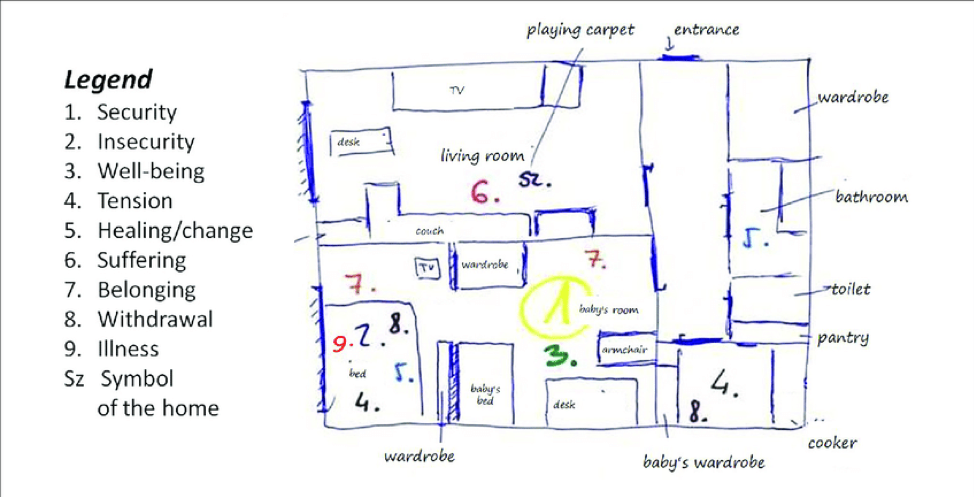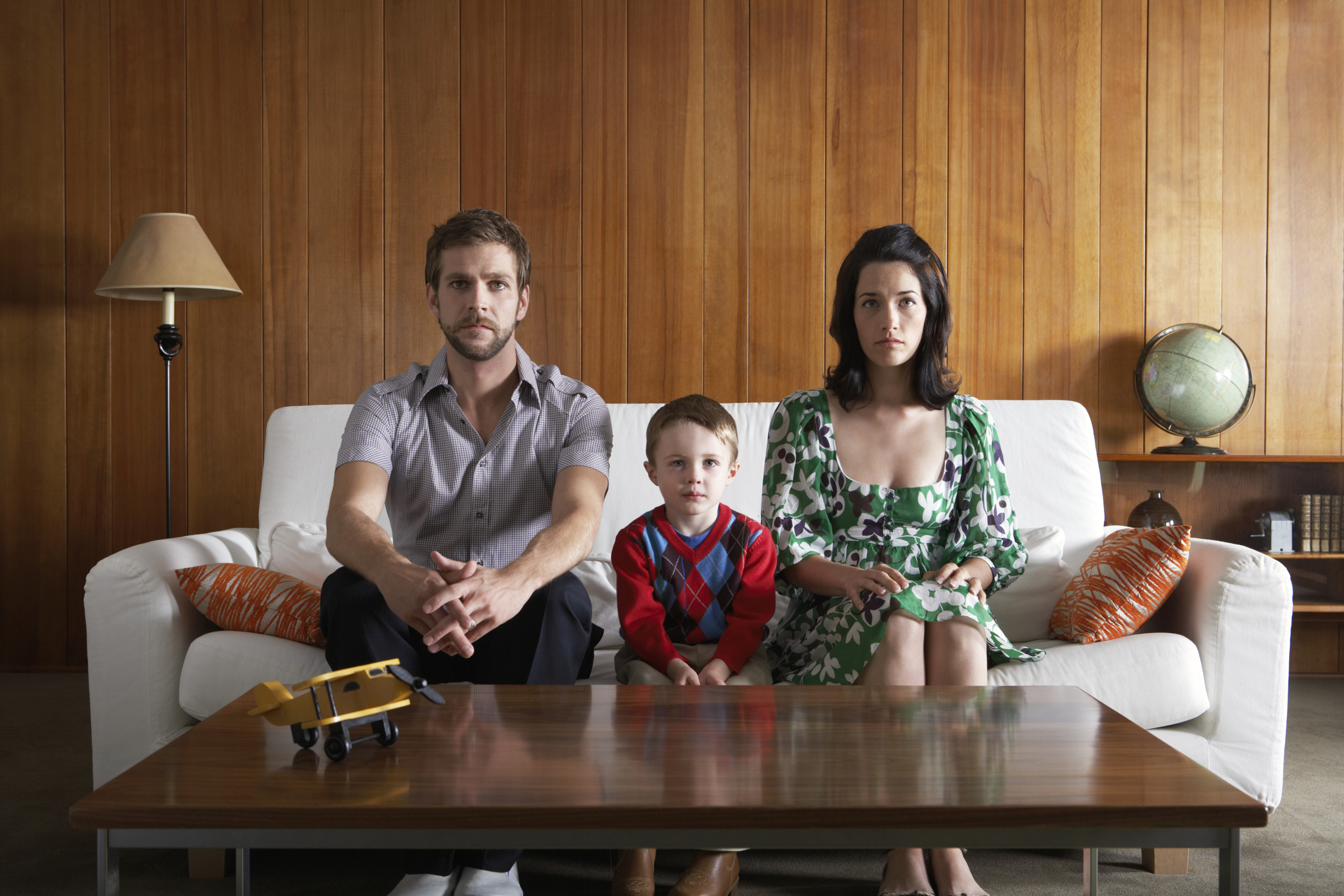LIVES Impact
Special Issue n°2 - COVID-19 crisis - July 16 2020
The emotional climate in the family can deteriorate due to a lockdown and its consequences. However, for families with multiple sources of vulnerability, the experience of emotional tension is a risk factor for the emergence or relapse of mental disorders in certain family members or for an increase in domestic violence. Research on the family and on family therapy offers several avenues to promote family resilience during a lockdown.
Download the full version of this special LIVES Impact issue in PDF format.
Introduction
The rapid evolution of the coronavirus pandemic has created an anxiety-provoking time and has led to lockdown measures all round the world. This is a situation that can have an emotional impact (i.e. symptoms of stress, confusion and anger), the effects of which can last beyond the end of a lockdown (Brooks et al., 2020). In this context of adversity, family ties can provide support to help cope with the situation and reduce the likelihood of developing psychological difficulties (Holmes et al., 2020; Masten, 2018).
However, for families who already had apparent vulnerabilities (Spini, Bernardi, & Oris 2017), the risk of a deterioration in the emotional family climate is high, that is to say that family members will experience difficulty in regulating their emotions, both with each other and with people outside of the family (Henry et al., 2015). This deterioration in the emotional climate can be due to the presence, before lockdown, of individual vulnerabilities (e.g. anxiety symptoms in one of the family members) or collective vulnerabilities (e.g. a family living in a disadvantaged region). These vulnerabilities accumulate with other difficulties related to a lockdown, such as loss of employment or lack of extra-familial support.
Emotional difficulties within the family can in turn constitute a stress factor which will amplify the family’s vulnerability (Henry et al., 2015). In this paper, we offer a brief review of the factors which have a negative impact on the family emotional climate and ways to deal with them.
Vulnerability factors and family emotional climate
During a lockdown, the family emotional climate may be influenced by contextual risk factors:
- Concern for one's own health and that of family members and fear of infecting them (especially grandparents) (Brooks et al., 2020). Fear of the virus, which may be heightened in situations where a family member is a member of a high-risk group or works in an occupation with direct risks, such as the health professions (Holmes, 2020).
-
The characteristics of the living environment (i.e. compact living space, lack of natural light, privacy and outdoor space), which become crucial during a lockdown, as they can have a significant impact on the psychological functioning of each individual (Braubach, 2007; Jones-Rounds et al., 2014) and thus on the family emotional climate. A study conducted during the recent lockdown confirms the importance of these material living conditions for families, which have a greater impact on the mental health of the family members, than the length of lockdown (Pancani et al., 2020). In particular, a lack of personal space in the home will prevent some family members withdrawing to a safe space or sanctuary when the family emotional climate becomes tense. In a complementary way, the family system’s lack of possible openings to the outside world (i.e. to health professionals, psychiatrists, schools, child protection services) during a lockdown may increase emotional tensions as there are fewer escape routes available (Peterman et al., 2020). This social isolation can thus exacerbate individual and collective vulnerabilities whilst reducing the traditional avenues of support, particularly in situations of family violence (van Gelder et al., 2020).
-
Stresses associated with the fear of not having adequate income to meet the family's basic needs (Brooks et al., 2020). A deterioration in the family emotional climate could thus be linked to job insecurity or job loss, or to a future fear of losing employment (Restubog et al., 2020). Furthermore, the new equilibrium between family and work during the period of lockdown may have a significant impact on the emotional family climate (Alon et al., 2020). For example, the way in which the parents agree on the distribution of the extra time spent looking after the children and the tensions and conflicts that may arise as a result.
It should be noted that families are disproportionately confronted with these risk factors during a lockdown and that gender inequalities exist within families (Wenham et al., 2020). For example, particularly in Switzerland, this situation has undoubtedly affected women more than men. Indeed, the majority of family caregiving is assumed by women, and this may have limited their ability to invest professionally at work (Le Goff & Levy, 2017).
Emotional family climate and psychological consequences
There exists a large body of literature highlighting the importance of the family emotional climate in both relapse or the emergence of many psychological disorders such as psychotic disorders, depression or eating disorders (Buzlaff & Hooley, 1998) and also with certain physical disorders such as diabetes (Wearden, 2000). It has been shown that a family atmosphere marked by high levels of expressed emotion favours the emergence of psychological symptoms that can sometimes lead to psychiatric hospitalisation. The term "high expressed emotion" in these studies, refers in particular to intrusive and repeated ways of making contact within the family or to giving unsolicited and often critical advice, as well as emotional responses marked by anger or acute stress (Burbach, 2013). Risk of relapse may be increased if contact between family members is prolonged (Bebbington & Kuipers, 1994; Wearden et al., 2000), such as during a lockdown. For example, it has been found that for families living in the same household as a young adult diagnosed with a psychotic disorder, prolonged contact (>35 hours per week) increased the risk of symptom recurrence when the family emotional climate was marked by intensely negative expressed emotion (Bebbington & Kuipers, 1994). These findings highlight the importance of openness to the extra-familial world, in particular to support from health professionals during a lockdown. These effects of high expressed emotion which were originally observed in families living with young adults, are also found in families with children and adolescents where they constitute a major risk factor for the appearance or evolution of various psychological issues (Peris & Miklowitz, 2015), including anxiety and depressive disorders. On the other hand, a warm emotional climate can play a protective role in preventing the onset of certain mental disorders (Butler et al., 2019).
It should also be noted that in other family contexts, the deterioration of the emotional climate, associated with lockdown, has led to an increase in intrafamily violence, mainly against women and girls who are most at risk (Peterman et al., 2020; van Gelder et al., 2020; Humphrey et al., 2020). This situation is reinforced by social isolation, particularly due to the closure of schools, which removed the safety net for detecting parental violence against children (van Gelder et al., 2020). Intrafamily violence and its possible consequences on mental health are also well known (Gruhn & Compas, 2020).
Avenues of Family Resiliency
Lockdowns strain the adaptability and flexibility of families with their resources (economic, social and psychological) and these are not equally distributed. Research in the field of family processes and family therapy proposes potential avenues and tools to promote family resilience, namely the "system's ability to resist and bounce back in the face of adversity, strengthened and more resourceful" (Walsh, 2016, p. 617). In particular, studies indicate the importance of:
-
A shared belief system that allows the family to make sense of what happens within a socio-cultural system of belonging (Henry et al., 2015; Masten et al., 2018; Walsh, 2007). For example, during lockdown, a sense of we are all in it together is seen as a way to support the health care system and protect the most vulnerable;
-
Organization of family roles. To accomplish this, one of the parents’ central tasks is to maintain or re-establish family routines, rituals and rules that provide a sense of coherence and well-being during times of adversity (Walsh, 2007, 2016; Masten et al., 2018). This organization contributes to maintaining stability, which helps children in particular to regulate their emotions (Masten et al., 2018). These studies also underline the need for flexibility to make adaptations according to the evolution of the situation and the needs of each family member. For example, by setting up weekly family meetings to adjust family rules during the lockdown period. The adaptation of the family’s organisation to the new situation will largely depend on the mobilisation of economic and social resources such as financial security, community social support and societal institutions, together with the balance between work and family;
-
Family communication that promotes regulation of the family emotional climate and collaborative problem solving. In this regard, parents have a role as co-regulators of their children's emotions (Masten et al., 2018) and also as facilitators of open emotional sharing of both the painful and the positive aspects of the situation (Walsh, 2007, 2016). In situations where this regulation is undermined, opening up to the outside world (i.e. extended family or friends) or to professionals, through the telephone or other digital means when direct contact is not possible, can help restore emotional regulation capacities (Humphrey et al., 2020). It should be noted that the importance of regulating the family emotional climate is reflected in various recommendations that have been transmitted to families during the lockdown (for example those of the WHO, 2020). They stress the importance of parents allowing space for their children's emotional expressions of stress as well as finding constructive ways to facilitate the expression and sharing of emotions. The value of normalising negative emotions and accepting certain defiant behaviours in children during this period is also highlighted in these recommendations.
The Emotional Map of the Home: A Tool for Resilience
We will end this brief review by mentioning a tool that promotes emotional sharing within families. This tool for exploring the family emotional climate (Emotional Map of the Home, Sallay et al., 2019; see Appendix 1) can be used in both family research and clinical settings. This tool has proven to be very useful in our clinical practice during the lockdown. It is based on the idea that the living environment can be used as a way of regulating the emotions of different family members (Korpella, 1992; Manzo, 2003). Practically, the emotional climate of a family is investigated by asking each member to draw his or her living quarters, indicating the different rooms and the emotions associated with each of them. Surprisingly, the living room may, for example, be associated with fear and sadness in families where tensions are common place. Similarly, the kitchen can be linked to emotions of joy in a family where the meal is an appreciated shared moment. Areas of conflict, sharing, isolation or security are also indicated.
In the second step, the drawings of each family member can be compared. Based on our clinical experience, this tool offers a way to address the emotions being experienced whilst integrating the concrete impacts of the family's material living environment with an identification of the changes that occurred with the lockdown. For example, has a family member appropriated a communal space? During times of lockdown, and with vulnerable families, addressing the issue of emotional safe spaces, first of all in a very concrete way in relation to the living space, can then lead to identifying the emotional states of family members, each other’s needs, and thus encourage family resilience during a tense emotional time.
- Alon, T. M., Doepke, M., Olmstead-Rumsey, J., & Tertilt, M. (2020). The impact of COVID-19 on gender equality (No. w26947). National Bureau of Economic Research.
- Bebbington, P., & Kuipers, L. (1994). The predictive utility of expressed emotion in schizophrenia: an aggregate analysis. Psychological medicine, 24(3), 707-718.
- Braubach, M. (2007). Residential conditions and their impact on residential environment satisfaction and health: results of the WHO large analysis and review of European housing and health status (LARES) study. International Journal of Environment and Pollution, 30(3-4), 384-403.
- Brooks, S. K., Webster, R. K., Smith, L. E., Woodland, L., Wessely, S., Greenberg, N., & Rubin, G. J. (2020). The psychological impact of quarantine and how to reduce it: rapid review of the evidence. The Lancet, 395,912–20.
- Burbach, F. R. (2013). Towards a systemic understanding of family emotional atmosphere and outcome after psychosis. In Psychosis and Emotion (pp. 132-151). Routledge.
- Butler, R., Berry, K., Varese, F., & Bucci, S. (2019). Are family warmth and positive remarks related to outcomes in psychosis? A systematic review. Psychological medicine, 49(8), 1250-1265.
- Butzlaff, R. L., & Hooley, J. M. (1998). Expressed emotion and psychiatric relapse: a meta-analysis. Archives of general psychiatry, 55(6), 547-552.
- Gruhn, M.A., & Compas, B.E. (2020). Effects of maltreatment on coping and emotion regulation in childhood and adolescence: A meta-analytic review. Child Abuse & Neglect, 103, 104446.
- Henry, C. S., Sheffield Morris, A., & Harrist, A. W. (2015). Family resilience: Moving into the third wave. Family Relations, 64(1), 22-43.
- Holmes, E. A., O'Connor, R. C., Perry, V. H., Tracey, I., Wessely, S., Arseneault, L., ... & Ford, T. (2020). Multidisciplinary research priorities for the COVID-19 pandemic: a call for action for mental health science. The Lancet Psychiatry, 7(6), 547-560.
- Humphreys, K. L., Myint, M. T., & Zeanah, C. H. (2020). Increased risk for family violence during the COVID-19 pandemic. Pediatrics, 145(4), e20200982.
- Jones-Rounds, M. L., Evans, G. W., & Braubach, M. (2014). The interactive effects of housing and neighbourhood quality on psychological well-being. J Epidemiol Community Health, 68(2), 171-175.
- Korpela, K. M. (1992). Adolescents' favourite places and environmental self-regulation. Journal of Environmental Psychology, 12(3), 249-258.
- Le Goff, J. M., & Levy, R. (Eds.). (2017). Devenir parents, devenir inégaux: transition à la parentalité et inégalités de genre. Zurich: Seismo.
- Manzo, L. C. (2003). Beyond house and haven: Toward a revisioning of emotional relationships with places. Journal of environmental psychology, 23(1), 47-61.
- Masten, A. S. (2018). Resilience theory and research on children and families: Past, present, and promise. Journal of Family Theory & Review, 10(1), 12-31.
- Organisation Mondiale de la Santé. (2020, 29 mai). #HealthyAtHome (en bonne santé à la maison)- Santé mentale. https://www.who.int/fr/news-room/campaigns/connecting-the-world-to-combat-coronavirus/healthyathome/healthyathome---mental-health
- Pancani, L., Marinucci, M., Aureli, N., & Riva, P. (2020). Forced social isolation and mental health: A study on 1006 Italians under COVID-19 quarantine. PsyArXiv Preprints. https://doi.org/10.31234/osf.io/uacfj
- Peris, T. S., & Miklowitz, D. J. (2015). Parental expressed emotion and youth psychopathology: New directions for an old construct. Child Psychiatry & Human Development, 46(6), 863-873.
- Peterman, A., Potts, A., O’Donnell, M., Thompson, K., Shah, N., Oertelt-Prigione, S., & van Gelder, N. (2020). Pandemics and violence against women and children. Center for Global Development working paper, 528.
- Restubog, S. L. D., Ocampo, A. C. G., & Wang, L. (2020). Taking control amidst the chaos: Emotion regulation during the COVID-19 pandemic. Journal of Vocational Behavior, 190.
- Sallay, V., Martos, T., Chatfield, S. L., & Dúll, A. (2019). Strategies of Dyadic Coping and Self–regulation in the Family Homes of Chronically Ill Persons: A Qualitative Research Study Using the Emotional Map of the Home Interview Method. Frontiers in psychology, 10, 403.
- Spini, D., Bernardi, L., & Oris, M. (2017). Toward a life course framework for studying vulnerability. Research in Human Development, 14(1), 5-25.
- van Gelder, N., Peterman, A., Potts, A., O'Donnell, M., Thompson, K., Shah, N., & Oertelt-Prigione, S. (2020). COVID-19: Reducing the risk of infection might increase the risk of intimate partner violence. EClinicalMedicine, 21.
- Walsh, F. (2007). Traumatic loss and major disasters: Strengthening family and community resilience. Family process, 46(2), 207-227.
- Walsh, F. (2016). Applying a family resilience framework in training, practice, and research: Mastering the art of the possible. Family Process, 55(4), 616-632.
- Wearden, A. J., Tarrier, N., Barrowclough, C., Zastowny, T. R., & Rahill, A. A. (2000). A review of expressed emotion research in health care. Clinical psychology review, 20(5), 633-666.
- Wenham, C., Smith, J., & Morgan, R. (2020). COVID-19: the gendered impacts of the outbreak. The Lancet, 395(10227), 846-848.
Annexe 1: An Emotional Map of the Home reprinted from Sallay et al., 2019

Authors
MANUEL TETTAMANTI, FSP Psychotherapist, PhD, Psychotherapy programme for Families and Couples and Psychiatric Service for Young Adults, Department of Psychiatry, University Hospital of Geneva,
JOËLLE DARWICHE, Professor of Clinical Psychology, Family and Development Research Centre (FADO), Institute of Psychology, Faculty of Social and Political Sciences, University of Lausanne
LIVES Impact
LIVES Impact (ISSN: 2297-6124) publishes regularly policy-relevant research findings from studies conducted at the LIVES Centre. It is published in three languages (French, German and English) and is sent to decision-makers in public administration, politics and non-governmental organizations, mostly in Switzerland.
In response to the current health crisis, LIVES impact launches Special Issues which are aimed at providing useful guidance and policy-relevant insights from the perspective of both the life course as well as more broadly behavioural and social sciences.
Special issues editors: Pascal Maeder, HES-SO & LIVES Centre (pascal.maeder@hes-so.ch)


